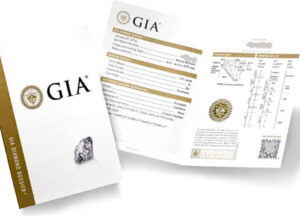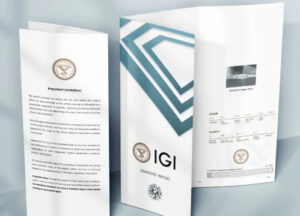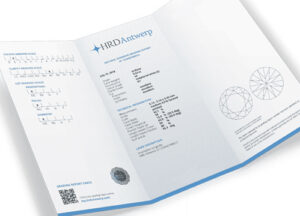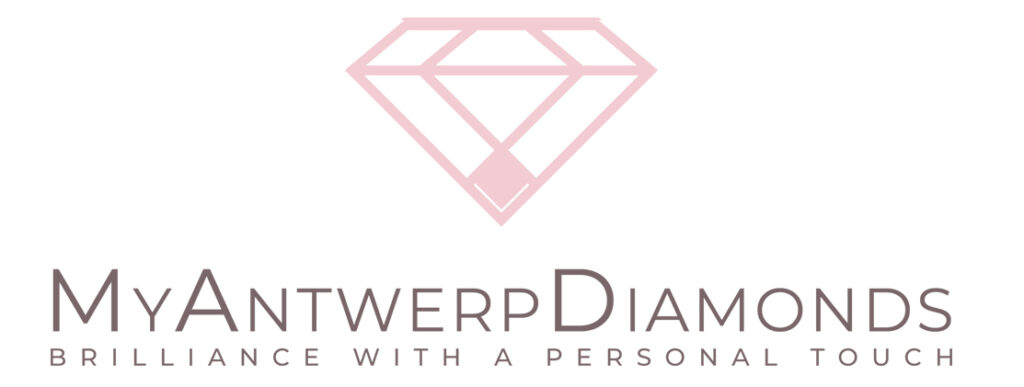Diamond grading and certification
When purchasing a diamond, one of the most important documents to look for is its grading certificate. Often referred to as the diamond’s “passport,” a certificate is a detailed report issued by a professional gemological laboratory that outlines the diamond’s exact measurements, weight, cut, color, clarity, and other defining characteristics.
In essence, a certificate is a schematic plan of the diamond, providing a clear and objective analysis of its quality. It verifies the diamond’s authenticity, serves as proof of value, and protects both buyer and seller by offering a trusted third-party evaluation.
We offer diamonds that are certified by the world’s most respected laboratories, including:
GIA – Gemological Institute of America, known globally for its strict grading standards
HRD – Hoge Raad voor Diamant (Diamond High Council), based in Antwerp, with strong recognition in Europe
IGI – International Gemological Institute, widely used in both retail and international markets
GIA - Gemological Institute of America
The Gemological Institute of America (GIA) is widely recognized as the industry’s gold standard in diamond certification. As the world’s largest and most respected gemological authority, GIA provides trusted certification for diamonds, colored gemstones, and pearls. It is also the institution that formally introduced the 4 Cs—cut, color, clarity, and carat weight—which have become the universal method for grading diamonds.
As the leading global authority, GIA offers several types of diamond reports to suit different needs:
Diamond Grading Report
Diamond Dossier Report
Diamond eReport
Diamond Focus Report
While some diamond sellers may claim to offer stones graded “to GIA standards,” it’s important to understand that no other organization matches GIA’s level of consistency, accuracy, and integrity. 
IGI – International Gemological Institute
The International Gemological Institute (IGI), established in 1975, is the oldest diamond grading institute in Antwerp and is recognized today as a premium global grading laboratory. With over 20 laboratories worldwide, IGI serves as a trusted authority for both consumers and the jewelry trade.
IGI specializes in grading a wide range of gemstones and jewelry, including natural diamonds, lab-grown diamonds, colored diamonds, and finished jewelry pieces. Its broad scope of expertise and fast turnaround times have made it a preferred choice for retailers and manufacturers seeking professional certification.
IGI offers several types of detailed grading reports, including:
Hearts & Arrows Diamond Grading Report
Lab-Grown Diamond Grading Report
Diamond Grading Report
Colored Diamonds Report
With a strong global presence and a reputation for consistency and accessibility, IGI remains a respected name in gemological certification—trusted by the industry and valued by customers seeking confidence in their purchase.
HRD – Hoge Raad voor Diamant (Diamond High Council),
HRD Antwerp (originally Hoge Raad voor Diamant), established in 1973, is a prominent and internationally recognized diamond grading laboratory based in Antwerp, Belgium—the heart of the global diamond trade. HRD is a leading authority in Europe, known for its precise grading standards and scientific approach to certifying diamonds and gemstones.
Although HRD certificates are not as commonly used in the United States, they are highly respected across Europe, the Middle East, and Asia, making HRD a reliable and reputable choice in international markets.
Additional Grading Laboratories
While there are many other diamond grading laboratories operating globally, we do not recommend using them for diamonds of significant value. In many cases, these labs apply inconsistent or overly generous grading standards, which can lead to inflated reports that do not accurately reflect a diamond’s true quality. For serious buyers and investors, it is essential to rely on reputable, internationally recognized labs such as GIA, HRD, and IGI to ensure accuracy, transparency, and long-term value.
In-House Grading for Small Diamonds
While larger diamonds are typically certified by independent gemological laboratories, many of the smaller diamonds used in bracelets, necklaces, and fine jewelry accents are graded in-house by our certified diamond expert.
Our in-house grading process ensures that each diamond meets our strict standards for color, clarity, and overall quality—even when certification from external labs would not be practical due to size or cost. These diamonds are carefully examined and classified by a qualified in-house diamond grader who adheres to recognized industry guidelines.
Each piece of jewelry that includes in-house graded diamonds comes with a certificate issued by us, specifying the key characteristics of the stones used. This approach allows us to maintain consistent quality across our collections while offering excellent value and transparency.
In-house grading is a trusted practice in the fine jewelry industry for diamonds typically under 0.20 carats and ensures that clients receive beautifully matched, high-quality stones.
Understanding a Diamond Grading Report
Key Pages: Create & Customize Jewelry
Diamond Jewley From the Atelier
Essential Diamond & Jewelry Education
Important Links: Support & Policies
MyAntwerpDiamonds.com /
- sales +32 473 21 02 44
- sales +32 473 21 02 44
- administration +32 3 231 1643
- SUPPORT@myantwerpdiamonds.com
- NV JOAILLERIE FRÈRES FROHMANN, Pelikaanstraat 54, 2018 Antwerp, Belgium
Some email responses from us may be filtered as spam or blocked altogether. To ensure you receive our emails, please provide your telephone or WhatsApp number for verification.



